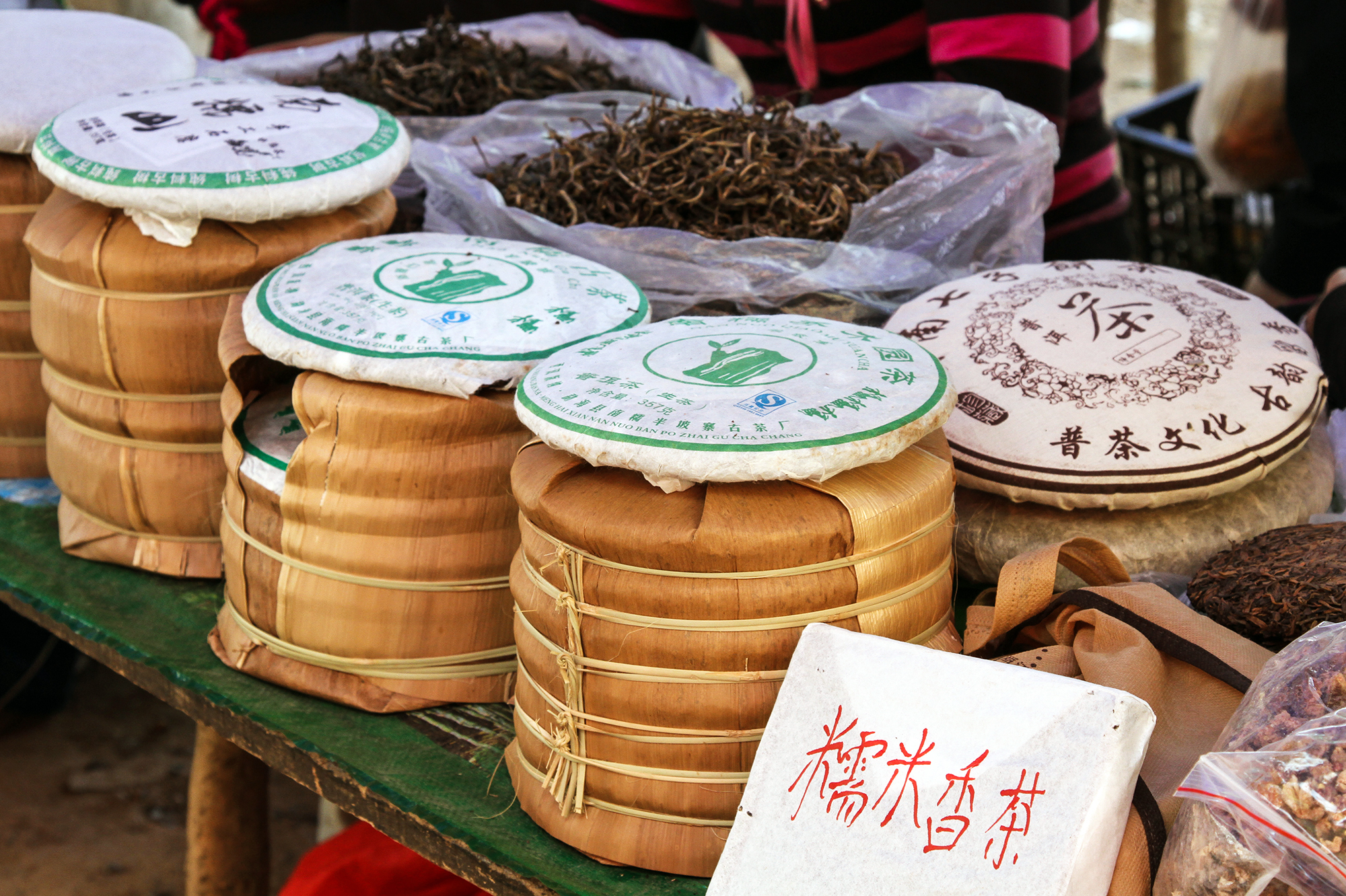Chinese tea cakes, also known as “pu-erh cakes” or “pu-erh tuo cha,” hold a rich history and cultural significance deeply rooted in Chinese tea traditions. These unique compressed tea cakes primarily feature pu-erh tea, a distinct and fermented tea variety hailing from the Yunnan province in southwestern China.
To thoroughly explore the world of Chinese tea cakes, it is essential to delve into the origins, production methods, types, flavors, and the cultural significance of these revered tea products.
I. Origins and Historical Background
Chinese tea cakes, particularly those centered around pu-erh tea, trace their roots to ancient China, where tea was discovered over 4,000 years ago. The Yunnan province, renowned for its diverse tea culture and ideal climate for tea cultivation, stands as the birthplace of pu-erh tea. It is believed that pu-erh tea cultivation and consumption have been prevalent in Yunnan for over a millennium.
The term “pu-erh” is derived from Pu’er, a city in Yunnan, which historically served as a major trading hub for tea along the Ancient Tea Horse Road. This road was a crucial trading route connecting Yunnan to Tibet, India, and other regions, fostering the exchange of tea and cultural influences.
II. Production Methods
A. Harvesting and Processing
The production of Chinese tea cakes begins with the harvesting of tea leaves, typically from large-leaf tea varieties found in Yunnan. The leaves undergo a meticulous process that includes withering, rolling, fermentation, and drying. The fermentation process distinguishes pu-erh tea from other types of tea, as it encourages the development of unique flavors and aromas over time.
B. Compression and Shaping
After fermentation, the tea is shaped into cakes through various methods, including compression. This step involves pressing the processed tea leaves into compact forms, such as disks or bowls. The compression not only facilitates storage and transportation but also contributes to the aging process, which enhances the flavor profile of the tea.
III. Types of Chinese Tea Cakes
A. Raw (Sheng) Pu-erh Cakes
Raw pu-erh cakes undergo minimal fermentation, allowing them to retain a vibrant and grassy flavor profile. These cakes are often favored for their potential to age and develop complex flavors over time, much like fine wines. Raw pu-erh cakes are typically green in appearance and are celebrated for their freshness and vitality.
B. Ripe (Shou) Pu-erh Cakes
Ripe pu-erh cakes, on the other hand, undergo an accelerated fermentation process known as “wo dui.” This method results in a darker, richer brew with earthy and mellow tones. Ripe pu-erh is often preferred by those seeking a more immediate and approachable tea experience. The aging potential of ripe pu-erh is different from that of raw pu-erh, and the flavor profile tends to stabilize more quickly.
C. Tuo Cha and Other Shapes
In addition to cakes, pu-erh tea is compressed into various shapes, such as tuo cha (bowl-shaped), bricks, and nests. Each shape can influence the brewing process, impacting the release of flavors and aromas. Tuo cha, in particular, is known for its convenience, as the individual servings make it easy to portion and brew.
IV. Flavors and Aromas
The flavors and aromas of Chinese tea cakes, especially those made with pu-erh tea, are diverse and nuanced. Raw pu-erh cakes often boast floral, fruity, and herbaceous notes, evolving into complex profiles with age. Ripe pu-erh cakes, with their earthy and woody tones, offer a comforting and robust brew. The aging process plays a crucial role in enhancing these flavors, making aged pu-erh highly sought after by tea connoisseurs.
V. Cultural Significance
A. Tea as a Symbol of Hospitality
In Chinese culture, tea has long been regarded as a symbol of hospitality and social connection. Offering tea to guests is a time-honored tradition, signifying warmth and respect. Chinese tea cakes, with their intricate production processes and rich flavors, are often shared during special occasions, celebrations, or formal gatherings.
B. Pu-erh Tea as an Investment
Beyond its cultural significance, pu-erh tea, especially aged varieties, has gained recognition as a form of investment. Collectors and enthusiasts may acquire pu-erh cakes with the intention of allowing them to mature over time, akin to aging fine wines. The increasing demand for well-aged pu-erh has created a market where rare and vintage tea cakes can fetch significant prices.
C. Rituals and Ceremonies
Tea ceremonies have deep roots in Chinese culture, and the preparation and consumption of pu-erh tea are often accompanied by specific rituals. These rituals emphasize mindfulness, focus, and a connection to nature. The practice of gongfu cha, a traditional Chinese tea ceremony, is particularly associated with the artful brewing of pu-erh tea, showcasing the tea’s versatility and the skill of the tea master.
VI. Modern Trends and Global Impact
In recent years, Chinese tea cakes, especially pu-erh varieties, have gained popularity beyond China’s borders. The global interest in traditional teas and unique brewing practices has led to an increased demand for high-quality pu-erh cakes. As a result, tea enthusiasts worldwide are exploring the diverse world of Chinese tea cakes, appreciating the craftsmanship, flavors, and cultural significance embedded in each compressed form.
VII. Conclusion
In conclusion, Chinese tea cakes, particularly those crafted from pu-erh tea, offer a fascinating journey into the world of Chinese tea culture. From their origins in Yunnan to the intricate production methods, diverse types, flavors, and cultural significance, these tea cakes stand as a testament to the rich heritage and evolving traditions of tea in China.
Whether enjoyed for their vibrant and fresh notes or cherished for their aged and complex profiles, Chinese tea cakes continue to captivate tea enthusiasts, fostering a deep appreciation for the artistry and craftsmanship behind each compressed leaf. As global interest in traditional teas continues to rise, Chinese tea cakes, with their storied past and dynamic present, remain key players in the world of tea appreciation and connoisseurship.
